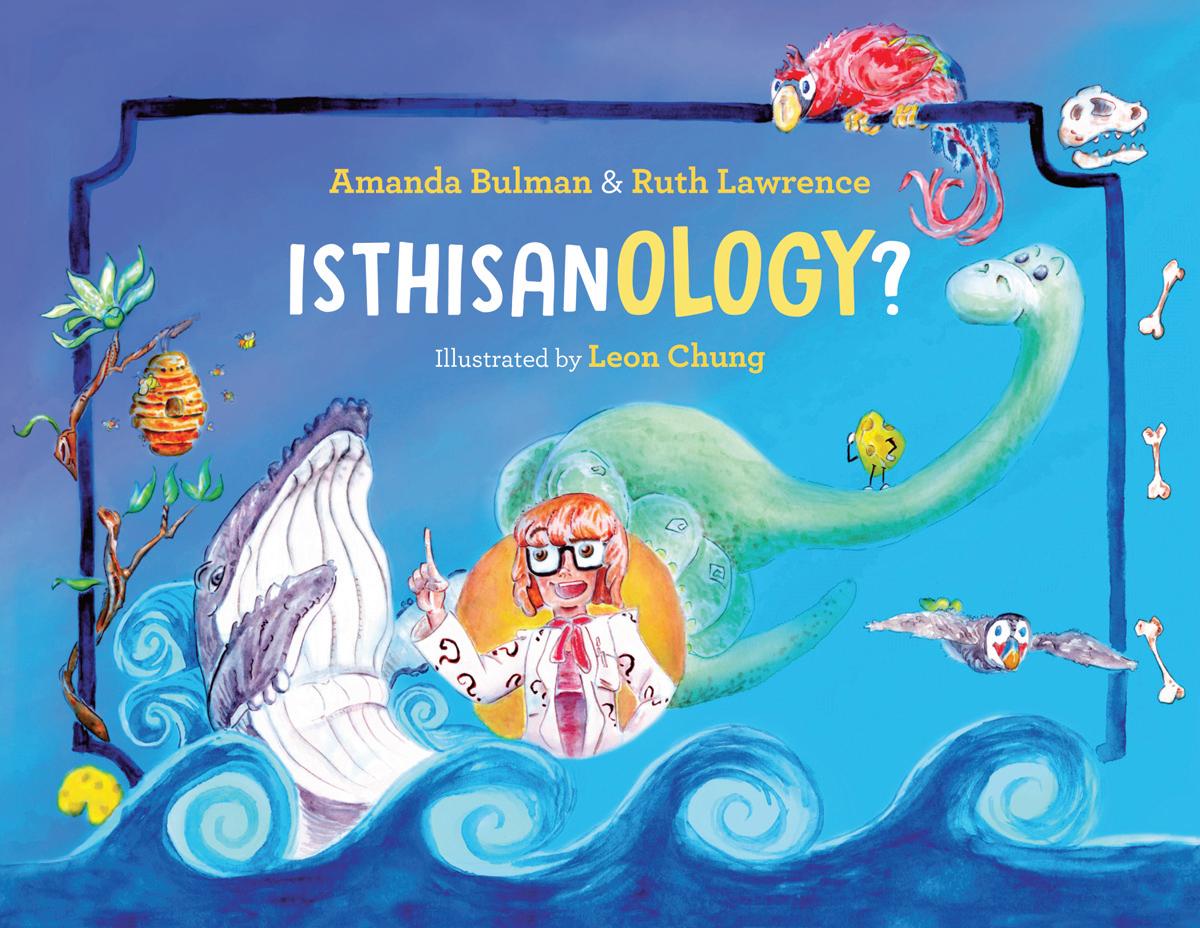







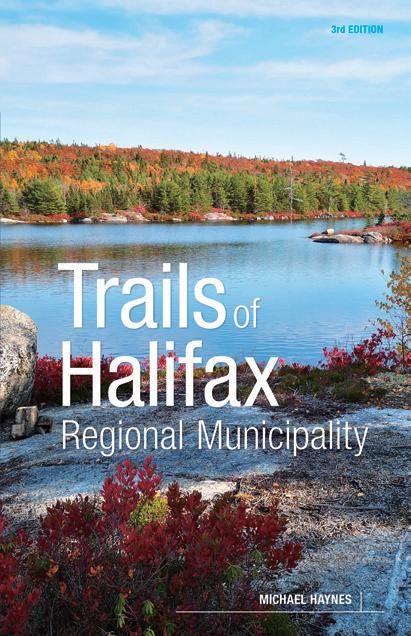


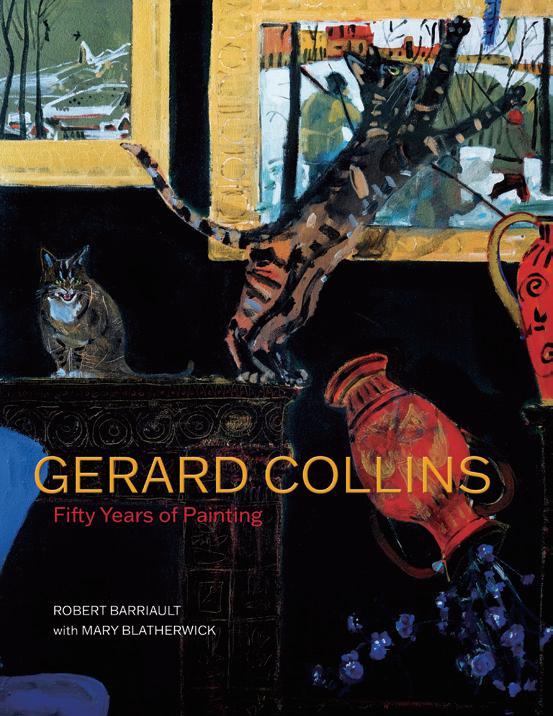



















Message
4 Message from the editor
Foreword
6 Cover story
Cover Feature
8 Full capacity sparkle by Sarah Butland
News Feature
13 When true crime hits close to home by Mallory
Burnside-Holmes16 Imagining Crime by Meg
D. Edwards18 Seas the day to save our fishing history by
Trevor CorkumBook Features
12 Review of Francene Cosman’s Nurse! by Abena Beloved Green
30 A young history of Canada’s oldest Black community by Andre Fenton
31 The people you find in lost graveyards by Craig Ferguson
Author in Conversation
21 “Our stories are catching on”: The origins of the Mi’kmaw Honour Song by Julie Pellissier-Lush



24 How to cheer up a poet
A conversation with Lesley Choyce
24 Birdsong in winter to silence the inner critic
A conversation between Renée Hartleib and Daniel Lillford
ABOUT THE COVER
Reflection
32 “When one parent dies, you lose two.”
Excerpts
33 Some There Are Fearless
34 Chasing Paradise
38 Chores Reviews
36 Mercy Gene
37 What Comes Echoing Back
39 Staff Picks
Young Readers
41 Reviews
Photo-explorer Steve Skafte has built a big online following for his images of abandoned and forgotten places. His photo, “Old Rugged Cross,” was captured in an overgrown Church of England cemetery in Gays River, N.S. He found the rotting cross broken into two pieces and repaired it.
“It’s really just a brief salvation; no wooden reminder lives half as long as the stones here. It’s the irony of iconography, placing eternal meaning in things that fade so fast; a dead tree shaped into a symbol of resurrection, brought down by a living one uprooted in a storm,” he writes in The Dead Die Twice, published by Nimbus. Read our review on page 31.

A few weeks after taking over as editor of Atlantic Books Today in the fall from Chris Benjamin, I had my first public event: the launch of Books by Heart. It’s a public humanities project that will explore the potential of book culture to help patients and staff in a hospital setting. Students at the University of King’s College are piloting the program for us, so we launched it there. It was a homecoming for me, as I graduated from King’s with an MFA in creative nonfiction in 2020. Dr. Gabrielle Horne, who works in the cardiology department at the QEII Hospital in Halifax, spearheaded the program, which will bring free, accessible Atlantic Canadian books to patients on her unit. She was also a classmate of mine at King’s and I was delighted by the chance to work with her on this important project. The highly trained staff know how to take care of the body; this program hopes to foster the human connection between staff and patient. I told the gathering how my father, a retired chaplain at that hospital, had told me he was often the only person to visit patients solely to ask about them, not to fix their
body. Patients could sometimes feel like broken-down cars being repaired in a garage, he said, and he sought to create a human connection. Just like Books by Heart
Less than two weeks later, my family found itself at a crossroads. My father was back in the cardiac unit — as a patient facing an unexpected open-heart surgery. Suddenly, Books by Heart was a very personal project. I saw the astonishing, life-saving work Dr. Horne’s team does, and how patients face long, lonely hours of waiting. Hours perfect for reading. My dad even volunteered to pilot the project for us.
I saw how staff and patients long for a human connection with each other, and the potential for Books by Heart to connect them. We brought my father home on Christmas Day — the greatest present. It’s a gift I look forward to returning many times as Books By Hearts prepares to launch at the hospital.
When I saw our cover image, Steve Skafte’s delicate portrait of a fallen cross in a spring-green cemetery, it stirred my heart. For many people, the cross is a symbol of transforming suffering into hope. In the pages ahead, you will meet people who found that power in books. They poured their pain and joy onto the pages, and came out sparkling at full capacity. Read on for books, hearts and hope.
 by Halifax author & dentist Brandon Doucet
by Halifax author & dentist Brandon Doucet



“Doucet pulls back the curtain on a highly privatized system of Corporate Dentistry
care.” — Steven Staples, Canadian Health Coalition

Atlantic Publishers Marketing Association
Karen Cole
Jon Tattrie
Gwen North Chantelle Rideout
Lynn McCallum
Atlantic Books Today is published by the Atlantic Publishers Marketing Association (www.atlanticpublishers.ca), which gratefully acknowledges the financial assistance of the Government of Canada, the Canada Council for the Arts, the Government of New Brunswick, the Government of Newfoundland and Labrador, the Government of Nova Scotia and the Government of PEI. Opinions expressed in articles in Atlantic Books Today do not necessarily reflect the views and opinions of the Board of the Atlantic Publishers Marketing Association.
Printed in Canada. This is issue number 97 Spring 23. Atlantic Books Today is published twice a year. All issues are numbered in sequence. Total Atlantic-wide circulation: 30,000. ISSN 1192-3652

One-year subscriptions to Atlanti c Books Today are available for $15 ($17.25 including HST). For a special offer on a 2-year subscription with a bonus canvas tote bag for $25 ($28.75 including HST), visit atlanticbooks.ca/join and use code ABT. Please make cheques payable to the Atlantic Publishers Marketing Association and mail to address below or contact admin@atlanticpublishers.ca for subscription inquiries. If you would no longer like to receive copies of the magazine sent to your address, please let us know.
Publications Mail Agreement No. 40038836
Return undeliverable Canadian addresses to:
Atlantic Publishers Marketing Association


Atlantic Books Today
Suite 710, 1888 Brunswick Street, Halifax, NS B3J 3J8
Phone: 902-420-0711
Fax: 902-423-4302
atlanticbooks.ca








@abtmagazine
facebook.com/AtlanticBooksToday




@atlanticbooks.ca
@atlanticbooks.ca
check us out on

phone 709-739-4477
toll-free 1-866-739-4420

www.flankerpress.com





We know you can’t judge a book by its cover, but you can judge the cover by the cover. Daphne Greer wanted something special for Jacob’s Dilemma She turned to photographer and author Nicola Davison.




The photographer, Nicola Davison: “Daphne Greer saw a post of my son, Dylan, and thought he resembled her main character, Jacob, who is the same age. She reached out to see if he might like to be a model and (yay!) he was all in.
“Newport Landing is significant to the character, so it made sense to shoot in that spot. The sun was going in and out of the clouds, so we’d get warm, glowing light followed by a cool blue, creating a variety of moods. I had Daphne standing off to the side holding a reflector.

“In the novel, Jacob receives a letter and Daphne envisioned him reading it while facing the spot where so much of his family history has played out.”





The author, Daphne Greer: “Nicola did such a smashing job capturing just the right emotion for the story and Dylan played the part beautifully. Nimbus had initially chosen the photo where Jacob is looking out to the water, but I felt the one we have used captured more of how he was feeling regarding his dilemma.” ■

























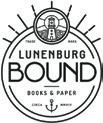


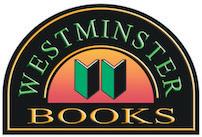












































 By Sarah Butland
By Sarah Butland

Spring brings light into our lives like no other season. Flowers blossom, green returns to the earth, the sun shines bright and warm again and yet, this spring three Atlantic Canadian authors prove we do not need the seasons to change to shine; the sparkle and light come from within.
“Don’t wait for the ‘right time,’ as that right time may never come. You make now the ‘right time.’ You choose gratitude and live your happy right now,” says Angela Parker-Brown, author of Writing With My Eyes: Staying Alive While Dying. In her book, she urges people to “sparkle at full capacity.”
Parker-Brown writes with such grace that her determination and spirit sparkle even during her darkest times. Parker-Brown was living her busy life in Truro, N.S., as a mother of twin girls, with work, friends and family, when she took her troublesome right foot to the doctor in 2016.

“I’m sure he didn’t think this young beautiful Black woman sitting in front of him had ALS. Who would, for crying out loud?” she writes.
She takes readers on her journey as her body progressively loses its mobility, ultimately putting her in a situation where
Three new books challenge ablebodied people to grow their sense of community
if she wanted to write her book, she’d have to do it with her eyes and a high-tech computer. She faces her own mortality, always looking for chances to sparkle. Her diagnosis is not her, but it increasingly shapes her life. Her physical woes highlight her mental strength and powerful spirit.
“When I picture myself (and everyone), I picture a person with a million little pinholes. Those pinholes are our happiness, our hope, our spirituality, every good thing about us, our love,” she writes. “Those pinholes radiate light. Those lights make us sparkle. Can you picture this? Aren’t we beautiful?”
Jen Powley was 37 when she first checked out a seniors’ home. It didn’t strike her as beautiful, but it was how the province of Nova Scotia was offering to help her live with multiple sclerosis.
“Though it is meant to be a home, it does not smell like a home — either in a good way or a bad way. Maybe it was the hour at which I arrived, but it smelled neither like freshly baked cookies nor like mouldy damp towels. It smelled like nothing except cleaning chemicals,” she writes.
In Making a Home: Assisted Living in the Community for Young Disabled People, Powley reveals the blueprint for how she challenged the government on that housing decision — and won. Through first-hand experiences and wellresearched evidence, Powley shares her story of slow progress that led to success.
Powley was diagnosed with multiple sclerosis as a teenager and now relies on personal assistants and a wheelchair to navigate the world in Halifax. Her voice is loud and clear on the page, though she confides that her physical voice is so soft now that her boyfriend must lean in and listen carefully before amplifying her message to others. In 2022, Nova Scotia announced it had heard her loud and clear, and 25 young adults living in nursing homes would be given a chance to live in the community.
Powley wrote her first book, Just Jen, as a celebration of her life with multiple sclerosis. Making a Home looks at the wider issues people face when living with a disability, including seeking fulfilment sexually and emotionally, as well as the need to pay assistants better to reflect the importance of their work.

A central point in her book is that being human goes well beyond being a body, and that maximizing autonomy and independence for people with disabilities should guide every other decision. She compares how different provinces support people with disabilities, and what they can learn from the new push for more thoughtful housing options for young people with disabilities.
“I think that able-body people need to understand that all types of people are part of the community. This means having people who are differently abled living in the same building as them,” she told Atlantic Books Today. “They need to understand people with disabilities as their equals. I don’t think I’ll live long enough to see equality.”
While Parker-Brown and Powley offer first-person accounts of life with a disability, author Marla Lesage explores the impact of parental disabilities on children. Her graphic novel AWOL takes place in Oromocto, N.B., and stars a young girl growing up in “armyville.” Her father returns from deployment with unstable moods driven by his post-traumatic stress disorder.
By showing the problems that come from ignoring your mental health, Lesage tells a beautiful story to young readers about the importance of transparency when dealing with disabilities that are not easily seen.
Lesage used a limited number of muted colours to reflect the sombre mood, but to keep a hopeful tone. Dandelions feature prominently.
“Dandelions have so many benefits. I’ve always loved them and I don’t really understand why some people go to such great efforts to remove all traces of them! I love the way a field looks when it’s dotted with yellow,” she told ABT.
“I think the dandelion is such a great representative of the military child. The mature flower is frequently picked by children to gift to loved ones. Who hasn’t enjoyed blowing the seeds from the mature flower? I especially like seeing images of those seeds floating through the air as a representation of the military child. Like those seeds, the military child finds themselves in new settings that aren’t always ideal, yet they find a way to grow and thrive.”
A central phrase in the story is “apc-oc-knomiyul,” which means “I will see you again” in Wolastoqey, as it captures the coming-and-going nature of a military childhood where “hello” and “goodbye” often don’t cut it.
“I’d decided very early on to set the story in Oromocto — a real life armyville — and had wanted to reflect the community, so it made sense to put a bit of both French and Wolastoqey in the story,” says Lesage, a registered nurse who lives in Fredericton.

Oromocto is home to Canadian Forces Base Gagetown and near the Wolastoqey community of Welamukotuk.
Parker-Brown, Powley and Lesage show people can “sparkle at full capacity,” no matter how the world tries to cover their lights.
Parker-Brown died in February, as this magazine was being edited. She spoke to ABT shortly before her death. She said, “Happiness is attainable at any stage of life. Why wait? Claim your happy!” ■
SARAH BUTLAND remembers her school days of announcing her aspirations of being a writer and the naysayers’ reaction, to which she replied “watch me.” Now, with this article in Atlantic Books Today, she only hopes they are. She lives in Pictou County, N.S., and previously spent many years exploring the streets of Moncton, N.B., collecting stories, memories and meeting interesting people. She’s the author of Losing It At 40 and Gaining It At 41


“When I picture myself (and everyone), I picture a person with a million little pinholes. Those pinholes are our happiness, our hope, our spirituality, every good thing about us, our love...Those pinholes radiate light. Those lights make us sparkle. Can you picture this? Aren’t we beautiful?”
 by Abena Beloved Green
by Abena Beloved Green
Francene Cosman reflects on her life before she became a political pioneer
Nurse!
Francene Cosman
OC Publishing
Concerned that she might run out of time to record an important era in her life and in the nursing profession, Francene Cosman “put [herself] back into discipline mode” and penned Nurse! Penned it. Literally. “I don’t write creatively on a computer. I write it all longhand and then I dictate it back by reading it. That sounds bulky but my creative juices flow best when I have a pen and notebook,” she says.
Cosman’s memories proved vivid as she recollected her intensive nursing training at New Brunswick’s Saint John General Hospital in 1959 and career path thereafter.
While some readers will know her as the first mayor of Bedford, N.S., and for her time as an MLA in Nova Scotia, this book recounts her first calling.
She details the demands placed on student nurses in terms of knowledge, on-site application and personal presentation. From the description of uniform requirements and the coveted “whites” demonstrating the completion of a rite of passage in the nursing world, to high-stress and heartfelt encounters on different wards, Nurse! quite naturally pulls readers into the nervousness, eagerness, fatigue, precision and sense of accomplishment folded into the reality of bedside nursing.
Cosman did well to explain injuries, ailments, symptoms and procedures in detailed and accessible language so that anyone, regardless of knowledge of medical language, could understand and visualize the careful tasks that had to be done, whether it was testing blood or disinfecting a room. Additional reflections that add value to this book were those regarding rules around pregnancy while in nursing
school as well as changes that have occurred within professional training over the decades.
I found myself moving through Nurse! rather quickly and looking forward to picking up the book. Cosman has animated her memories in true narrative style, pulling the reader into several mini-stories. She then zooms out and offers insight on the societal context at the time. It was easy to form pictures in one’s mind of the author rushing from class to the hospital to the dorm, and her cast of classmates and patients in various scenes. I cheered her on when she described anxious moments during surgery and the risks she took during school, as if the day-to-day duties didn’t apply enough pressure.
This memoir will give readers fresh insight into the gritty details of what nursing entails and leave them with a renewed respect for nurses (and laundry staff and cleaners). Readers are reminded that simple sanitization and bed-making alone is doing infection control and takes diligence, attentiveness and consistency.

Readers will relate to the uncertainty of having to decide, at some point, what paths to take in life and then moving forward on that path with steadfastness and hopefulness, despite its rigour and moments of occasional self-doubt. ■
Poet, writer and dancer ABENA BELOVED GREEN seeks to create, engage and elevate through words and movement. She teaches people to write stories of their own through workshops and coaching. Her first book of poetry, The Way We Hold On, was published by Pottersfield Press. Raised in Antigonish, N.S., Abena now resides in eastern Ontario with her family.

In our true-crime-obsessed age, we have a choice of thousands of podcasts and binge-able docuseries that dissect crimes that take place the world over. But what about crimes that hit closer to home? Stories that are already personal to the authors who write them and the readers who read them, and who will recognize the names, know the faces and have memories of where they were when they learned the terrible news?
The names of Const. Michael O’Leary, Cpl. Aurele Bourgeois and Karissa Boudreau will bring up dark memories for many Atlantic Canadians. The first two were police officers murdered in New Brunswick in 1974; the last a child killed by her own mother in Nova Scotia in 2008. They are also the subjects of three new books authored by a criminal historian, an RCMP officer and a journalist, and will take you on three very different journeys of criminal cases that happened close to home.
Growing up, Amy Bell knew her father, Ed Bell, was a former criminal defence lawyer. She also knew that he never talked about it. While packing up her father’s house a few years ago as he approached the end of his life, she
discovered a mysterious Polaroid photo of a shirtless, longhaired man covered in bruises. She asked her father about the photo, but he said nothing. However, a visiting friend turned to her and said, “Oh, didn’t you know? Everybody knows this. This was the most famous murder case in Moncton.”
The case he was referring to is the 1974 killing of two Moncton police officers, Bourgeois and O’Leary, by Richard Ambrose and James Hutchison. Ambrose and Hutchison had kidnapped a local child and collected a ransom. The two police officers were pursuing them when they were killed. The child was not hurt. Ed Bell was a lawyer in the area at the time, and when he saw the men had been arrested, he decided that as everyone deserves a defence in court, he would step up to perform what he considered his legal duty and represent them. Amy Bell was a newborn when he made that decision, and her family began to unravel around her. In Life Sentence: How My Father Defended Two Murderers and Lost Himself, she recounts some of her personal struggle to make sense of her father’s decisions, while also exploring the awful crime. As she
Three new books return to those left behind by violent acts
details in her book, being a defence lawyer for two cop-killers proved socially and emotionally tumultuous — especially as capital punishment was still legal in Canada and the killers faced the death penalty. Both were convicted, but not executed.
For Bell, writing Life Sentence was a difficult experience. She’s a history professor in Ontario with a special focus on crime. Usually, she approaches the subject as an objective observer, not a subjective participant. “Because when you’re a historian, you’re usually quite distanced from your subject, so to try and write a book that was filled with very painful experiences for me, and also really the story of the tragedy of my dad’s life, was very painful,” she told Atlantic Books Today
At the same time, she found herself fascinated by the historical practices of the case. The book covers topics like forensics, chain-of-evidence procedures and prisoners’ rights before Canada created the Charter of Rights and Freedoms. It also presents a critical view of the Moncton police force as it existed in the 1970s. The initial response to the kidnapping was disorganized, which may have exposed the officers to extra risk. And the photo Amy Bell discovered of Ambrose displays bruises from injuries he suffered while in police custody.
Two other new books explore the wounds left by the 2008 murder of 12-year-old Karissa Boudreau in Bridgewater, N.S. Retired RCMP officer John Elliott’s A Mother’s Betrayal was three years in the making and offers his perspective as a lead officer on the case that shocked people in the small community and beyond. The young girl’s mother, Penny Boudreau, reported her missing in late January 2008. She and her family held several press conferences pleading for her safe return. But as Elliott reveals, the police investigation eventually came to believe that Boudreau had killed her daughter the day she went missing. The intensive, months-long investigation where they sought to prove that forms the main part of the book. It stretched many officers to their breaking point.
Elliott offers his unique vantage point of knowing the case from the inside out. The book includes police documents, such as the official statement of facts and victim-impact statements, and breaks down how a top-tier murder investigation is run, including the Mr. Big operation that ultimately led to securing Boudreau’s confession and conviction. How they got her confession, and the way that stunned the officers who heard it, stuck with Elliott long after the case was closed and Boudreau pleaded guilty to second-degree murder. A significant portion of the book
“The police force does not come out in a great light,” Bell said. “It isn’t just my opinion. There were other investigative bodies that were saying the same thing [at the time].” However, she notes that then-and-now comparisons aren’t all that helpful, as Canada has since adopted the Charter of Rights and Freedoms and abolished the death penalty. Life Sentence is a stirring mix of fact and personal experience that paints a picture of the Ambrose and Hutchison case that hasn’t been seen before. Bell calls readers to examine their perceptions of defence lawyers and the lives they must lead to uphold our country’s legal system. While Life Sentence does an excellent job of detailing the case itself, Bell said it’s also personal. “This is really a New Brunswick story. I want people there to read and to understand the perspective of my dad and of his life.”
includes interviews with other officers who worked the case 15 years ago. Elliott was surprised by how many of his former colleagues not only thought about the case as much as he did, but also suffered from PTSD from their work.
“I wasn’t alone in what I was writing about,” Elliott said in an interview. “All the other investigators were very supportive [and] positive. They were on the same wavelength as I was: it’s a story that has to be told.”
Why revisit a period of time that’s had such a haunting impact on his life? Firstly, he says, for Karissa. “There was so much more to her than how her mother had painted her during the investigation. Really, she was a 12-year-old little girl with dreams and aspirations, and she deserved more than what her mother made her out to be.”
Elliott also strives to bring awareness to the emotional
“Because when you’re a historian, you’re usually quite distanced from your subject, so to try and write a book that was filled with very painful experiences for me, and also really the story of the tragedy of my dad’s life, was very painful,”
work police officers take home with them. This case in particular led to his retirement three years later. “There is so much more to an investigation than what you see on TV,” he repeated throughout the interview.
When asked what he found most enriching about his writing experience, Elliott replied, “Having the book out in the world. I didn’t have to be on my own anymore.”
While A Mother’s Betrayal offers the inside-out perspective, Sherri Aikenhead’s Mommy Don’t brings a wider, outside-in perspective of Karissa Boudreau’s murder. Aikenhead, a former journalist, worked as the communications director for the Nova Scotia Department of Justice at the time of the murder. She experienced the nightmarish unfolding of Karissa’s death much the same way her fellow community members did.


As much as Aikenhead’s goal was to write a tribute to Karissa, who would be 27 today, she also wanted to explore Penny Boudreau. She had no criminal past, no hint of violence, until she brutally killed her daughter. In her confessions, she said her daughter’s last words were “Mommy, don’t,” a phrase that haunted Aikenhead and many others.
Boudreau is serving a life sentence that will include imprisonment until at least 2028, but she has in recent years been granted temporary escorted passes from prison to attend church and visit friends.
Now that the community is faced with the prospect of Boudreau’s eventual freedom, Aikenhead says we are
pressed to ask the question: “Has this woman changed?
It’s a controversial question and a burning one, this theme of redemption and can we really be rehabilitated while in prison,” Aikenhead said. “Is this a different woman that would leave [prison] and come into the community? Or is it in fact someone that has [not] changed at all?”
Aikenhead said the process of writing this book was “daunting.” “I literally started with the first detective who went out on the missing person’s call that night,” she said, and from there she conducted nearly 30 interviews with other officers (including Elliott), friends and family of the Boudreau family and obtained the day-by-day police report of the entire investigation.

Aikenhead wanted to share one key piece of what motivated her for the five years she spent writing Mommy Don’t. “I want people to read it and to think about the justice system, Karissa and what it’s like to be in a small town and have something like this happen.”
She understands people’s fascination with true crime and unthinkable murders. “You know, these are people we work with, go to school with. Ordinary people. What makes them cross a line that most people don’t? You want to know what pushes them over the edge.” ■

Anew crop of crime novels is sprouting up in Newfoundland and Labrador this spring and there is something for everybody, whether you like a cosy mystery, a gripping thriller or gritty realism.
In Four for Fogo Island, Kevin Major offers the perfect alchemy of sweet and salty, serving up the crime story like a digestive cookie with tea, while Natalie Carter-Giles’s Hunting Helena is a dark, suspenseful thriller and Shelly Kawaja’s Raw Light of Morning is a gritty, heartfelt examination of recovery from childhood trauma.
Major’s Four for Fogo Island (the fourth book in his Sebastian Synard mystery series) brings back the sardonic private investigator, Sebastian, in a lighthearted and tightly plotted mystery. A recent divorcee with a teenage son, Sebastian is a “man’s man” who speaks in clipped sentences and loves a good meal. Major says that writing a series is a lot of fun because it gives him the opportunity to “have his (Sebastian’s) personal relationships evolve over the books,” and in this novel Sebastian is offered plenty of opportunity for growth.
Sebastian is looking forward to an intimate four-day trip to Fogo Island with his new girlfriend, Mae. Unfortunately for him, upon their arrival on the island, the couple come across a murdered quilter and from there on in Sebastian is surrounded by eccentric women, young and old (including his ex-wife).

Sebastian’s disappointing getaway continues to devolve when he finds that his investigation methods don’t work
well with “fabric artists.” In the end he is forced to admit that Mae’s womanly style of emotional bonding and endless chatting is an effective investigative method, and he is left on the sidelines making acerbic comments about people’s outfits and motives.
Major’s sense of humour bubbles like a brook throughout the novel. Timbits play a role, and there is a tense car chase that ends up in a ferry queue on a small island with nowhere to hide. It’s not hard to picture this series as a television show and Major says his publishers are pushing for it. “I think the central character Sebastion would be a great role for someone,” says Major, “and the series could really come alive.”
Reading this book reignited my desire to visit Newfoundland and Labrador, especially Fogo Island, and that’s no accident. “I’ve always been a great proponent of the splendor of Newfoundland and Labrador,” says Major, who purposefully gave Sebastian the side job as tour guide so his character could travel all over the province.
For those readers who want less giggling and more shivers down the back, Natalie Carter-Giles’s first novel Hunting Helena falls into the thriller genre. The novel begins in the heart of a crime, with the narration of Helena’s horrific abduction and torture, and the exhilaration of her escape. This is a fast-paced thriller with suspense, plot twists and an unexpected resolution. However, fair warning for those who might have anxiety regarding abduction or sexual assault, the author does not spare the details.
But Helena is no victim. She is a survivor determined to conquer her fears and she develops into a brave detective in her own right. We soon discover that although Helena was held captive by a sadist for three months, she has been living free for the last eight years. In fact, she has had a child created during the abduction, and focused her life on keeping that child happy and safe. But those years have been tainted by fear because the “monster” that held her against her will was never caught.
She is “living in limbo,” says Carter-Giles. “She wants to move on, she wants to protect her child,” but she can’t feel safe. When another woman is abducted Helena feels she must face her tormentor and end the fear, so she returns to her dreaded hometown, where she is haunted by cryptic notes at every step. Helena does not know who to trust and has everything to lose.

Carter-Giles, a fulltime florist with a “happy life” and a huge garden, may seem like an unlikely author of such a dark plot, but she says she likes thinking about how people’s minds work. An avid reader, Carter-Giles says she started with Nancy Drew and just kept going. She likes the psychological aspect of crime novels, the suspense and the plot twists. “I read thrillers all the time,” says Carter-Giles.
In Shelly Kawaja’s The Raw Light of Morning, we are not cajoled along with delicious sounding meals and views of icebergs, nor are we plotting revenge. In this first novel we join a young teen named Lauren as she struggles to rise above the difficult circumstances of living in poverty and whose involvement in a traumatic crime forces her to act, violently and intentionally, in order to save her family.

“Was a crime committed? I don’t think there was,” says Kawaja, who believes that the young woman’s actions were justified and the violence and poverty that Lauren faced in her life was the actual crime.
Kawaja’s description of Lauren’s impoverished life feels authentic, and it is not surprising to hear that Kawaja grew up in subsidized housing with a strong single mom. The writing in The Raw Light of Morning draws you in with its palpable immediacy. It feels as if your breath is entwined with Lauren’s, and that it is your hand that is wiping the jam off the counter, or the blood from the floor.
In this realistic novel, the suspense is built around Lauren’s struggle to heal from the trauma of her life. As the reader, we want her to resist being dragged down into cycles of poverty and crime. “When you grow up in poverty you are exposed to crime, and there’s even pressure, at times, to be part of it,” says Kawaja.
Lauren is a survivor, but she struggles to hold her own against abusive, manipulative men and generational maternal neglect. At one of her darker moments, Lauren receives a gift from her taciturn grandmother that illuminates the bravery of Lauren’s mother and helps Lauren acknowledge her own strength and resilience.
In all three of these crime novels, the reader relies on the central character to lead them through the chaos and brambles of the crime to a comforting resolution. With laughter, gasps or sighs, we examine human nature and wonder about the age-old question of nature versus nurture. Can circumstances make a criminal out of anyone? What causes us to break the social contract?
We are drawn to crime novels for the challenge of the puzzle, and the thrill of suspense. But every crime novel carries at the heart of it our fascination with human behavior, circumstances, motivation and consequences. ■
MEG EDWARDS is a writer living in Baie Verte, N.B. Her first play, Wrack and Ruin, was a runner up in the Notable Acts Playwriting Festival in 2020, receiving a staged reading at the festival. Her second play, Road Kill, had a public reading as part of Live Bait Theatre’s New Works Festival in 2021. Meg is working on her first novel, a cosy mystery with an edge, set in New Brunswick.

Fred Dyke’s riveting memoir, Skipper Ches: As Tough as It Gets, lays bare what it was like to grow up in rural Newfoundland and Labrador at the midpoint of the twentieth century.

Skipper Ches chronicles the arc of his family’s life in post-Confederation Newfoundland. While the narrative centres chiefly on Dyke’s father Chesley — a renowned sailor and entrepreneur — the book takes a rich and satisfying deep dive into the social history of the second half of the twentieth century. As we come to know the various members of the Dyke clan, including Fred’s stoic mother Elsie and Fred’s spirited siblings, we trace the province’s history of economic growth, outward migration, cycles of boom and bust — and always, the lure and steadfast rhythm of the sea. Young Fred and his family experience hardships familiar to anyone living in this time and place — no indoor plumbing, a scarcity of fresh food, freak car accidents and the devastating deaths of young children — but it’s the resilience, familial love and the ever-present sense of adventure and curiosity that come through so warmly in the book.

The author says it was important to paint an accurate picture of his family. Remembering these times, he says, “Both my parents did what they had to do and never complained. They endured but they also enjoyed life.”
He started the book just before the beginning of the pandemic, sourcing stories from family members around the time of his parents’ funerals. During the pandemic, Dyke would rise early to write between 4 a.m. and 7 a.m. He estimates he wrote and rewrote fifteen drafts before sending the manuscript to Flanker Press. The memoir grew out of the family’s love of stories.
“We grew up listening to stories and quite often one or more of us witnessed them. When we get together as a family, we often relive them. I had been planning the book for years. I could have included many more stories of the times, but I decided to limit it to the ones involving my parents. The stories also came from the stories exchanged at the funerals of Mom and Dad.”
Donald J. Feltmate’s Building a Better Boat: How the Cape Island Longliner Saved the Nova Scotia Inshore Fishery spotlights another overlooked corner of Atlantic Canadian history. It’s a lucidly written volume that tracks the history of the Cape Island longliner, a type of small boat built for the lucrative shore fishery. Like Dyke’s memoir, Feltmate’s book documents a vital period of social and economic upheaval

in Atlantic Canada. The author traces the boat’s creation to the heady years of the Antigonish Movement and the birth of regional fishing co-operatives. A satisfying tangent outlines the vital contributions priests Moses Coady and James Tompkins made to organizing rural fishing communities and advocating for better pay for fishermen.

Feltmate unpacks the birth of the United Maritime Fishermen and charts the changes to fisheries regulations and federal-provincial politics that ushered in the conditions for

the birth of the Cape Island longliner, before nimbly charting its impact on the shore fishery and its eventual demise. For Feltmate, the book was a satisfying passion project.
“I grew up during the period when the Cape Island-type longliner was being introduced into the shore fishery and was old enough to see the impact this vessel was having on the economy of a number of fishing communities. I always had a deep personal affection for the longliner. As I grew older, my interest increased and I began to research and to appreciate that the development of such a fishing craft was not just the introduction of a ‘new tool’ and fishing method, but was tied directly to survival of the shore fishery itself.”
Like Dyke’s memoir, Building a Better Boat contributes to a better understanding of our region’s history. For Feltmate, that work is intentional.
“We as Maritimers have this habit of sort of taking our history for granted. The history of a specific industry, such as the shore fishery, is usually confined to those that worked in it and unless those outside the industry follow or connect the elements of the history or someone finally records this history, little attention is paid to it. As a result, the actual grassroots of the struggles, political indifference to how that industry survives, is rarely looked at from a collective perspective and is lost to time. This book is an attempt to bring the elements to the forefront and demonstrate the importance it had to the economics of the province as a whole.”
The meticulous social and technical research in Feltmate’s book will appeal not just to boat lovers, but to those interested in this pivotal period in Atlantic Canadian history. For Feltmate, given the economic and logistical
challenges involved in accessing archives and historical records, it’s an important story to tell. “We have to make our history more accessible.”
Finally, Atlantic Salmon Treasury: 75th Anniversary Edition mines historical archives of a different sort to put together a handsome book. Selected and edited by Charles Gaines and Monte Burke, the collection offers readers a selection of the most interesting and insightful articles, essays, poems, pictures and paintings from the Atlantic Salmon Journal between the years 1975–2020. The book covers a period when salmon stocks experienced an alarming and precipitous drop. In their introduction, the editors note the decline of the population of “two-sea-winter” Atlantic salmon of North American origin “from a total of around 800,000 in 1975 to fewer than 100,000 in 1999.” The articles in the current Treasury chart trends such as the advent of catch-and-release practices and the threat posed by the Greenland commercial fishery, making this new volume one that is “more reflective of both the need and means to conserve that resource, and to viewing that conservation not so much as a means as an end.”


Taken together, these three engaging non-fiction titles illustrate the vital contribution our regional presses make to reflecting our rich and storied histories back out into the world. ■
TREVOR CORKUM’s novel The World After Us will debut with Doubleday Canada in early 2024. He lives on the South Shore of Prince Edward Island, where he co-hosts creative residencies and retreats for writers at The Hideout.
One of our most beloved Knowledge Keepers, Elder George Paul, has dedicated more than four decades of his life to supporting the revitalization of our nation’s culture. In many ways, his tireless efforts have led a resurgence in our culture’s beautiful tapestry of language, spirit and tradition — a colourful Mi’kmaw tapestry made all the more powerful when celebrated through the performance arts — and in particular, as we come together as a community to join in traditional song and dance.
A residential school survivor from Metepenagiag Mi’kmaq Nation in New Brunswick, George credits formative musical collaborations with the Birch Creek Singers to supporting his journey back to traditional and ceremonial gatherings. In 1981, George organized his first Mawiomi at Red Bank (“Mawiomi” is the Mi’kmaw word for a powwow). In honour of the event, he lobbied leadership, spearheaded fundraising and gathered up friends
 by Julie Pellissier-Lush
by Julie Pellissier-Lush
“Our stories are catching on”: The origins of the Mi’kmaq
near and far to lend a hand. With each year, his music and passion continues to rally enthusiasm, inspiring L’nu’k and others to join in Indigenous cultural celebration from the four directions.
George’s music, including The Mi’kmaq Honour Song, was also featured in a recent compilation by the internationally renowned cellist, Yo-Yo Ma. He’s even expanded his performing arts repertoire to acting, making his premier on the big screen this spring in the movie Ug Wug. And while he’s brushing shoulders with the greats, he’s never too proud to enjoy karaoke with friends or sing along live to his favourite songs on Facebook, translating old favourites like Hawaiian Love into Mi’kmaq.
“When I seen the book, I was excited; this is the book that is in three languages. Our culture, our language, our stories are catching on. There are a lot of people looking to get this book, and I only have so many, but the publishing company, they are the ones that are the big movers on this,” he said.
“This all started when I was approached by a publishing company, who told me that this book was a very beautiful book, and because they were from the French community, and they said they would like to see this book go to a wider audience, like the French audience. They said there was a lot of interest across the country where the French communities are and the French schools as well. Once we talked, we formed an agreement and made a contract, where everything would be done in the three languages, English, French and Mi’kmaq. My first book was done in Nova Scotia, it was made to bring it to the schools for the kids to have, so they can understand the Mi’kmaq Honour Song, what it means and where it came from. To tell them about my experience in residential school, which ties in with what is happening these days.
“With my first book, I communicated back and forth with the ones helping me make it, approving everything that was going on with the book, mostly by email. They started looking for an artist, and even though I am an artist; they wanted a professional.”
Not to diminish George’s skill and talent as an artist; as a painter he has created beautiful, original works of art, one of which is still in the Lennox Island Museum, and this image also made it to the front of a book about Glooscap written by the late Keptin John Joe Sark.
“I offered them a few names, and they started searching for just the right person, and after looking around they found Loretta Gould.”
Loretta Gould was born in Cape Breton, in Waycobah First Nation, in Nova Scotia. Like George she dreamed of sharing her art all over the world. You can have a look at some of her beautiful work on her Facebook page, Mi’kmaq Artist Loretta Gould.
“I was very happy to have her as the artist for this book. Her style and vibrant colours are just what it needed and worked really well for it. When I saw the first vision of the whole thing, I was really excited. I really like the symbols they put in the book, the hieroglyphics; there is one there that represents learning. It gives those reading this book an idea of the history of the Mi’kmaq people and the writing system that we had. It doesn’t go into detail about the writing of the hieroglyphics, but it gives you the symbol there, and it means ‘to learn.’”
George said the book started with an interview he did in Cape Breton.
“I told my story about my experience, and they drew from that, and this book came out. It was written in the style for children, because they designed it that way, and it turned out just right, just what it needed. This book is even better, because of the collaboration we have had. Loretta agreed to be a part of it and her art work is going to get around, people will see her art wherever this book goes. It is the sharing of the art, sharing the story, and sharing what the Honour Song is, where it came from.”
Now just like in the book, George made a promise to keep sharing his story, to bring back the drumming and chanting, and he is doing that. His Mi’kmaq Honour Song has been translated into many languages since he first started sharing it and it still surprises him how far this song has travelled. It
“I told my story about my experience, and they drew from that, and this book came out. It was written in the style for children, because they designed it that way, and it turned out just right, just what it needed.
is all over the world now; people are sharing it, singing it and now they can learn more about where it came from through his new book.
George is not only an award-winning singer, traditional dancer and drummer, crafter and artist, he is now the writer of an amazing new book that is going to travel all over Canada and beyond to be read by many people, young and old. The sadness he felt over the loss of so much, his language, his drumming, dancing and song because of residential school, through that pain he was gifted a song from his ancestors, and now that song has a story, a story about truth, resilience and the heart of an amazing, talented man, Elder George Paul. Wela’lin (thank you) for helping to return honour and pride to our people, Nitap (my friend). ■

JULIE PELLISSIER-LUSH M.S.M, is an actress and bestselling author of My Mi’kmaq Mother, and the outgoing poet laureate for P.E.I. She lives in P.E.I. with her husband Rick, her five children and her granddaughter Miah.

Lesley Choyce has a new poetry collection out, and a new travelogue. We reached the iconic Atlantic Canadian writer mid-adventure in Lisbon, Portugal.

ABT: Toward the end of Never the Same Sea Twice, your sixteenth collection of poetry, you include three portraits of the poet: in the 1960s, 1980s and today. You’re brooding in the first two, and smiling in the last. What changed?

LC: When I was younger, I tried to fashion myself as an angry alienated young poet because I thought that was what poets were supposed to be. It was more pose than reality. My poetry was not even very angry but simply angst-ridden.
As I got older, I became more mellow and lost the angry young man motif. Brooding grew wearisome after all and I had moved to Nova Scotia and become a Canadian Author (with a capital A). This made me cheerful and careful — or at least I gained a sense of humour about the Human Condition, or at least the Human Canadian Condition.
So now, in my seventies, I want to be known as an insightful but cheerful scribe who can turn a good phrase while still being slightly absurd.
ABT: As a reader of “To You the Reader of this Poem,” first off, you’re welcome. Second, you suggest that 85 per cent of poetry should be gratitude, and 15 per cent for whining and complaining. But what if whining and complaining takes up 85 per cent of my brain?
LC: There’s really not much point to whining. A writer can complain if there is hope it can create change. But, yes, I am ever thankful to anyone who actually reads my poems. My readers are my heroes and I am deeply indebted. So if I can’t actually pay them for their kindness in cash — which would not work out all that well for me — I want to offer them the occasional kind words and good-spirited advice.
ABT: In “Epilogue: What Does it Mean to Be a Writer?,” you urge us to “write in all genres.” How do you decide which genre for which experience? Specifically, why did you choose to write Around England with a Dog as a travelogue, rather than poetry, or location-inspired fiction?
LC: Yes: the poet should write fiction and the journalist should write poetry and all writers should dabble in “creative nonfiction.” So my wife and I travelled with our dog around the U.K. looking for funny and interesting things to happen so I could write stories about our quest, just like my ancient nomadic ancestors. As it turned out, we were “looking for love” (as well as adventure, inspiration, greater truths, history, poetry, profundity and beer) in all the right places. And so the story must be told … but in my own quirky way.
Around England with a Dog Lesley Choyce Rocky Mountain Books


Never the Same Sea Twice Lesley Choyce Ekstasis Editions

OPPOSITE PAGE: Lesley Choyce broods in the 1980s photo for Reinventing the Wheel
LEFT: He’s smiling in this recent photo from his 16th poetry collection.
ABT: At the end of a fun-filled adventure, you take us home with you as Grand Dude holding a sleeping infant grandtwin, “pure darkness giving way to milky grey,” and you reflect on the ancestors you sought in England, and the family you made in Canada. Did this journey change the way you thought of your identity, connected to the past or to the future?
LC: I did one of those DNA tests hoping to find out if I had any interesting or exotic blood in my family line. The report came back basically saying, “Mr. Choyce, you are a quite average boring white guy of generic northern European descent.”



While this only confirmed what I already knew, my journey around the home of the original Choyces told me that we all have a history that has led to our individual, most improbable existence, and every search of our own past will lead to discovery (as well as inspiration, beer, etc.).

The quest is always more interesting than the outcome, I would say, just as the joy of actually writing outweighs the reward of having been published.





ABT: Switching hats, how many books do you think you’ve put out as publisher of Pottersfield Press? How does that form of book creation feed your soul, compared to writing your own books?
LC: Pottersfield has published close to 300 books since inception in 1978. I feel honoured to have brought into print so many great souls whose words have found readers. It’s more a labour of love than a business and each writer has taught me something and their stories have added greatly to my experience of living the literary life.

ABT: They say your first hundred books are the hardest. Now that you’re in your second century, what challenges get the heart-fire burning for you as a writer?
LC: My first book of poetry, published by Fred Cogswell of Fiddlehead Books, was titled Reinventing the Wheel, so now I’m more interested in reinventing myself. How to do this? By finding new voices in fiction to write from and moving forward more than looking back.
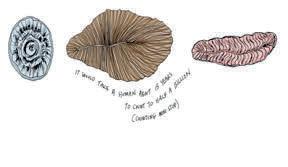


I’m struggling daily with my new identity, as any writer should, and keeping my eyes open to discovery and challenge. I feel like I’ve only just begun to understand the world and to be able to capture the crazy wonder of it all. ■


Renée Hartleib is an author, writer and writing mentor based out of Halifax, Nova Scotia. Her greatest passion is to help others connect with themselves and bring their creative dreams to life. Her new book, Writing Your Way: A 40-Day Path of SelfDiscovery, brings that wisdom to the page.
Daniel Lillford is a professional actor and playwright who has been working in the entertainment industry for over 42 years. He has had more than 35 productions of his plays performed around the world. Ghost Breezes, his first collection of short stories, was published by Moose House Publications.

RH: I just finished reading the first story in the collection. Wow! The factory farm really came alive with all those amazing details. I found it also profoundly sad and quite moving.
I know that you are an actor and also a playwright. I’m curious how you came to writing short stories?
DL: Glad you liked “The Chicken Catcher.” I concentrated on playwriting for so much of my life that there seemed little time for anything else. One of my bugbears as a playwright was the absence of one-act plays performed in the theatre. Writing a one-act play is perhaps the hardest of all disciplines for any playwright to master.
Writing short stories requires much of the same technique as writing short plays. In many ways, all I have done is to describe more of this and that, particularly the environment.
Andrew Wetmore, the editor from Moose House Publications, put out a call for a volume of local short stories in 2019, and I entered my story “The Course” into that one, and it was accepted. Andrew asked me at the launch if I had more stories. I did.
I’m a third of the way through Writing Your Way, nodding along with many of the chapters. Especially the inner critic one! That little bastard has a lot of explaining to do. When you sit down to write in the quiet of the morning, using a pencil/pen, do you listen to any music, or is the morning silence enough?
RH: I almost always write in complete silence. If I’m writing in a place where I need to drown out the sounds around me, I will put on headphones and play music, but never with words. Sometimes in the deep winter, I go to YouTube and search “bird song” and listen to birds chirping and calling for a few hours. It always lifts my spirits and reminds me that spring will eventually return.
Most of the personal writing I do is by hand, including the writing I do in a biweekly writing group. There are five of us and we meet at the absolutely gorgeous Agricola Street Books in Halifax, taking turns creating writing prompts for each other. It seems to generate writing that comes straight from our hearts.
But nostalgia and intimacy aside, I have to admit that I type much more quickly than I could ever write. I’m so grateful I took typing classes in Grade 10. Knowing how to type has certainly made my job much easier!
What about you? Where do you find your inspiration? And the burning question: what’s next? A novel, perhaps?
DL: I know of no other writer who seeks out birdsong in the dark of winter for hope and inspiration, but it makes

so much sense to me, for all those things you mentioned. I know I get enormous pleasure out of watching the birds on our feeders here when I’m writing in the kitchen.
I’m a naturally curious soul and I hope I go to the grave still pondering life on this wonderful old planet, and beyond, too. Growing up on Jersey, a small island in the English Channel, the smell of the sea was never far off. I miss it when I’m away from it for too long. Somehow just being small beside the sea puts me in my place.
I prefer to write in our kitchen here, looking out on the Annapolis River flowing through the bottom of the garden, mostly for the light. But I have always been able to write almost anywhere. So long as I have a pencil, a notebook, a sharpener, I’m set. I’ve written on beaches, in the car, in parking lots whilst waiting for my children to finish school and a crowded Italian restaurant in Melbourne was a favourite place when I was younger. I’d sit next to the kitchen at the back listening to the mayhem, the yelling, orders being shouted, the hustle and bustle of waiters and focus quite happily on my work.
I stream BBC Three most days as I potter about between chores and scribbling. And Yorkshire tea. Essential! Classical music remains a necessary part of my process. I sail better, as if the music is propelling my little boat wherever it needs to go.
As for the biggest challenges of the writing life… Well, making a living out of scribbling comes first. All the stuff I’m absolutely useless at, like finding a literary agent. I’d much prefer to write a play or a short story than deal with all that malarkey. I’m not a businessman.
Another volume of short stories is almost complete. As for writing a novel, I never say never, but I really do love writing short stories. I love the discipline, the clarity and the time. And of late I’ve been really enjoying bringing characters I like back into other tales. It’s enormous fun, and my world appears without horizons.
How about yourself, Renée, what are your writing challenges?


By the way, I’m quite jealous of your Grade 10 typing class. I still type with two fingers.
RH: My most productive time of year is from January to May or June. I usually take four to five weeks off in the summer to spend time with my partner and our kids and to visit my sister in B.C. She lives on an island and it takes two ferries to get there! Remote and wild and beautiful and absolutely fabulous for recharging my batteries. In the fall, I usually focus on “business” stuff, as I make my living from the professional writing, editing and writing mentoring I do.
I’m working on another non-fiction book, but I do also write fiction and have had a handful of short stories published. I aspire to write a novel (one day!). I carry small notebooks with me that get filled with these scribbled-down ideas, but they are sometimes hard to read or understand when I come back to them!
I’ve struggled with both practical and emotional/psychological roadblocks. My livelihood is centred around writing and words, but in order to write the things that are close to my heart, I’ve had to learn to set aside time for myself and my own writing. I’ve also had to grapple with a fierce inner critic who often wants to stop me in my tracks and cautions me at every turn. One gift that I give myself every year is to go on a one-week solo writing retreat. There is nothing more effective at stopping the noise and the busyness.











For inspiration, I turn to the poetry of Mary Oliver and memoirists like Cheryl Strayed, Joan Didion, Ann Patchett, Sue Monk Kidd, Dani Shapiro and Sharon Butala. I love the short stories of Alice Munro, Isabel Huggan and Alistair MacLeod. And some of my fav novelists are Barbara Kingsolver, Ann-Marie MacDonald, Rohinton Mistry, Jeffrey Eugenides, Anthony Doerr, Richard Ford and Elizabeth Strout. I think you would really like Elizabeth Strout because, like you, she writes stories with shared characters. Daniel, whose writing inspires you? And when did you start writing?
DL: I started writing at five. I have a very clear memory of sitting down in the family kitchen and thinking I should write a pirate story. I still remember the first line I put down: “A shot rang out in the night.”
I was no doubt influenced by R.L. Stevenson’s Treasure Island, which was the first book that really coloured my imagination and transported me into another realm. Writing didn’t really become serious until I had my first play performed. And after three productions, I then thought I could call myself a playwright.
The writers I come back to again and again are Graham Greene, H.E. Bates, Evelyn Waugh, George Orwell, Muriel
Spark, Iris Murdoch, Oscar Wilde, A.A. Milne, Kenneth Grahame, Somerset Maugham and Walter Macken.

Was there a teacher who encouraged you to write when you were at school?
RH: Her name was Mrs. Rutter and she was my Grade Six teacher. I vividly remember her calling me to her desk and telling me about a writing contest that our city newspaper (the Windsor Star, of Windsor, Ont.) was holding for kids. She encouraged me to write a story and submit it. I received a second-place prize and had my story, with my name on it, featured in the paper. It was the seed that has led to everything I’ve done as a writer.
Also, my mother read to me constantly, got me a library card at age two, and special ordered books from overseas. She was an extraordinary parent for an introverted kid who loved to read and wanted to be a writer.

Thanks for all of this! It’s been lovely to get to know you.
DL: I hope you still have your first library card. That was a special gift from your mum. Those small markers of time in our lives really do make the difference when one reflects on the journey. Best of luck with your book and your writing. ■








ISBN 978-2-89750-332-1 | $14.95

ISBN 978-2-89750-312-3 | $14.95



book written by the students
The ABCs
and published by the Delmore “Buddy” Daye Learning Institute. This is a captivating exploration of history told through the lens of youth who choose to celebrate their home, which happens to be Canada’s oldest Black community. North Preston has over 400 years of history.

The book opens with a warm introduction, featuring Arnold Johnson, a Second World War veteran and former Halifax county councillor. He spent much of his time being active in North Preston, creating many community groups. Anne Johnson-McDonald, Arnold Johnson’s daughter, became the principal of Nelson Whynder Elementary School in 2019.
The students behind this book shine light on current community members who have generational roots in North Preston, such as athletes like former Nelson Whynder Elementary student turned global basketball star Daneesha Provo, who has played professionally in Canada, the United States and Europe, and the widely celebrated NBA player, Lindell Wigginton, who is currently with the Wisconsin Herd.
This book also pays tribute to the many musicians who have roots in North Preston, like Reeny Smith, an award-winning R&B singer who won the 2022 African Nova Scotian Artist of the Year Award from Music Nova Scotia, and multi-talented artist Keonte Beals, who won the 2021 Music Nova Scotia Award for R&B/Soul recording
of the year. Keonte has recently published two children’s books: I Am Perfectly Me and I Am A King
The youth of North Preston don’t shy away from more mature topics, such as racial justice and activism. The youth show appreciation to Quentrel Provo, who founded the Stop The Violence organization in April 2015. Quentrel works with youth in many communities across Nova Scotia. Each page of stylized text is accompanied by illustrations that show the community members, history and locations with creativity and grace. This is a tribute handled with love, care and respect to past and present, all while bringing hope to the future, acknowledging that community is a timeless collective where we must inspire one another to find our full protentional. From celebrating the past, like the Jamaican Maroons and the Saint Thomas Baptist Church, to highlighting today’s athletes, artists and politicians, the youth of Nelson Whynder Elementary School showcase the history and present of North Preston openly and honestly, as they set the foundation to become the courageous future leaders of Canada’s oldest Black community.
“Y is for the youth of North Preston. The youth of North Preston are the stars of tomorrow. We are singers, doctors, lawyers, scholars, business owners, and athletes.” ■
ANDRE FENTON is an award-winning spoken word artist and filmmaker who has performed all across Canada while representing Halifax at national poetry slams in Montreal, Ottawa, Winnipeg, Saskatoon, Victoria and Vancouver. He writes poetry and young adult fiction. Andre lives in Halifax, N.S.
“W is for worth. North Preston is an important part of Canada’s history. We are proud of where we come from, and we are proud to tell our story.”
People wind up in cemeteries for all sorts of reasons. For the dead, it’s often carved right into the gravestone. For the living, the rationale is sometimes harder to tease out.
Steve Skafte visits abandoned cemeteries on a journey of discovery. He pins down the exact locations of old, overgrown resting places. He clears tangles of brambles obscuring tiny memorials of children. He uprights toppled stones. He rubs snow into the lettering of weathered memorials to reveal the stories of how the dead wound up there.


The Dead Die Twice collects Skafte’s photos and thoughts as he explores 20 lost cemeteries across Nova Scotia. It’s a window into an ongoing daily writing project Skafte began in 2007. He explores what he calls the “forgotten history” of the province, photographs his discoveries and pens intensely personal reflections on the process.
“There are thousands upon thousands of gravestones abandoned in Nova Scotia, far more than I’d ever imagined,” he writes. “If I spent my life intently searching for nothing else, I’d never visit them all. This is something few people can conceive of, how the woods are alive with the dead and their stories.”
The book chronicles one year’s exploration, organized by seasons, capturing the cycles of life, death and renewal among the elements slowly reclaiming these burying places. Skafte’s lens beautifully captures the moss enveloping the tombs, the winter freeze and thaw that cracks their stones and emerald shoots framing white marble stones tumbled to the ground in spring.
Skafte snaps a photograph of himself at each cemetery; sometimes propping up a gravestone or running his hand along some eroded text to help decipher it. He puts himself in the narrative, reminiscing about a lonely childhood as he stands over the graves of children who died long ago from
fevers and misadventure.
Skafte’s focus on the personal and poetic might frustrate history and genealogy buffs, two other sorts who wind up in cemeteries for their own reasons. But he also includes the GPS coordinates of each location for anyone looking to investigate these places themselves.
The Dead Die Twice takes its title from a sentiment that’s been attributed to everyone from Banksy to the ancient Egyptians: that we die first when our heart stops beating — and a second time when our name is never spoken again. Or, as Skafte writes in the book’s opening pages:
“The dead die twice first for the living then again in the forgetting”
That’s what draws Skafte past the edge of the clearing and deep into the woods. It’s the secret longing that motivates anyone who writes down their thoughts and shares them with anyone else. We don’t want to be forgotten. Skafte wants these people, these places — and himself — to be remembered and understood.
He writes: “Everyone wants their bones laid low, but nobody wants to sink their story with them.” ■
Violet Browne’s debut novel, This Is The House That Luke Built , grew out of decades of grief aft er she lost her husband at sea off the coast of Newfoundland. In the fi cti on version, the mother and her young family struggle to go on in the half-built house Luke left behind aft er dying at sea. In real life, it was an experience endured by Browne and her three children. Her daughter, Meghan Careen, shared her thoughts with Atlanti c Books Today on a book born of many hearts.
 by Meghan Careen
by Meghan Careen
This book, for me, is a testament to my experience that when one parent dies, you lose two. You are both orphaned by grief and raised by it.
How would you feel if your mom published this book? Every feeling. Fight, flight, freeze and fawn. Confusion. Fear, while also helping her birth it, chanting in her ear, holding her legs, cutting the cord of this sibling. Welcoming.
This book started as scraps of paper scattered across my childhood, pasted into poems through my adolescence and later began its gestation into novel. When I read the first very rough manuscript I said, “Mom if you want to publish this story, now is the time.” I said it is a book I’d read for myself and recommend to my friends. People will like it. I am her biggest fan and toughest critic.
It was a romance novel. It was not this, what became a mapping of our bodies and minds. I encouraged my mother’s story because I craved, for her, the healing and empowerment that it could bring. Also hoping that her healing could trickle down. Now, we gape at our raw wounds splayed for public consumption. We agreed to the ghosts, we were used to those. We didn’t know they could hurt us further.
You know that only 10 per cent of the iceberg is visible. The teeny tiny majestic tip drawing boatloads of oohs and ahhs from onlookers. You know that it is the 90 per cent unseen which sinks ships and gouges the face of the earth. The monstrous mass concealed by the glossy splashy sea. Of course this book is the tip of the iceberg.
She calls this book a love song to us, her children. I’ve told her, her love is like clanging symbols to my ears (you’ll find that on page 157, as her pages are infused with my words, hours, labour, ideas, criticisms, tears, chiseling.)

The love song is this: I believe in the power of stories, and in writing one’s own ending. The love song is in the stories of a line of women before me and around me who took pain and synthesized it into art, and taught me that magic. It is my inheritance.
Pain is beauty. Bloody feet in spike heels.
Hot wax. Hair ripped from the root. Needle-pricked fingers. Paint fumes. Wrists sliced over the page. We’ll smear dirt into a masterpiece.
We never were songbirds. ■
“When one parent dies, you lose two.”
Wehad learned about the Chernobyl nuclear accident in grade three Social Studies class. It had been on the news, so Mlle. Lefebvre must have decided it was best to explain it to us as gently as she could. That’s what she called it — a “nuclear accident.” I imagined a big barrel of dangerous, luminescent green liquid spilling across the power plant floor, and workers slipping on it and falling. She showed us where Chernobyl was on the big map on the wall opposite the windows. She tapped the spot where the accident had happened, then slowly arced her hand through the air to tap the spot where we were. The effect was meant to show us how far away it was. But I couldn’t help picturing the beach ball–shaped globe my mom had bought me. I wondered how far through the Earth it was between the two points. They were both on the same half, I noticed, both above the equator. Was it really that far?
“It was a very dangerous accident,” Mlle. Lefebvre said with a pink-lipsticked smile, “but you don’t need to worry about it. Very smart people are working very hard to fix it.”
Until that moment, it had not occurred to me that I would have to worry about it. Sure, I’d heard the story on the news, but I knew where Ukraine was. My grandparents had emigrated to Canada from Ukraine, and it was half a world away. Surely no accident there could ever hurt us here? But something about the determined gentleness in Mlle. Lefebvre’s tone made me wonder.
That night, I asked my mom. She was pulling a pan of fish and chips out of the oven as I set three plates and sets of cutlery on the counter.
“The accident in Ukraine? The power plant? Could that hurt us here?”
“If they don’t get a lid on it,” she replied.
“How?”
Kyle snorted. His job was to heat up some frozen vegetables. He dumped the peas into a bowl, jabbing the frozen lumps with his finger, and shoved it in the microwave.
“Don’t forget to add butter,” Mom said.
“It’s nuculear meltdown,” Kyle said. “The whole world could go totally Mad Max.”
“How?” I asked, playing with a knife I’d just set down.
“Radiation,” he said.
“What’s radiation?” I snapped.

“It’s, like, bad waves in the air,” he said, watching the peas go round and round. “It’ll turn everyone into mutants or something.”
I looked at my mom. “That’s not true,” I said. “Right?”
“Not quite.” She gestured at me to get my plate from the counter. “Eat, eat.”
I slipped a spear-shaped fish stick and a pile of fries onto my plate then squeezed a puddle of ketchup next to them. I sat down and bit into a fry. “Is that what they make nuclear bombs out of?” I asked. “Radiation?”
“Yup,” Kyle replied.
“Where are the peas?” Mom asked as she set her own plate on the counter. Kyle groaned and went to pull them out of the microwave.
That night, after I’d crawled into bed, I heard my mom on the phone. I caught the words Vira and Petro. Names, I realized, wondering where I’d heard them before. Her voice sounded tense when she said them.
Moments later, she walked past my bedroom door.
“Mom?” I called.
“You’re supposed to be asleep.”
“Who are Vira and Petro?”
She hesitated, rubbed a hand against her opposite shoulder and then let it drop. “My cousins,” she said at last.
“Why were you talking about them?”
“Go to sleep, Jessica.” Her voice hadn’t taken on the edge of annoyance yet. I knew it was okay to push. A bit.
“Please tell me?”
She took a slow breath, then finally answered. “I can’t reach them,” she said at last. “Auntie Maria, Vira’s mother, hasn’t been able to either.”
“Why not?”
Mom was staring over my head at the dark window above me. “Could be any reason,” she said. “Except they live in Dymer. In Ukraine.”
“That’s where Chernobyl is.” I felt an odd excitement bubbling up inside me. I knew someone, or at least knew of someone, who might have been killed by the disaster. I knew I should feel sad and worried. I tried to make my face look like that’s the way it felt.
“Never mind,” Mom said, her gaze snapping back down at me. “Go to sleep.” ■
An excerpt from Chasing Paradise: A Hitchhiker’s Search for Home in a World at War with Itself
“2 Escalating Incidents: Across Canada With Sadie.”

Darryl dropped us at the far side of Prince George, the hub of northern British Columbia, on Lheidli T’enneh land, where the rivers merge. The sign on the Prince George gun-shop window said: “The only thing lower than a child molester is most politicians.” Surrounding that: Reform Party propaganda. “World leaders who support gun control: Mussolini, Stalin, Gaddafi, Castro.” “Can you believe the government thinks that criminals can be stopped by taking away our guns?”
A giantess in a brown van stopped by the gun shop and rolled down her window. “Son, how far up the road you headed?”

“We’re headed to the highway, toward Prince Rupert.”
“Hop in, son; you too, daughter.”
“Where you going?”
“Hop in! Name’s Florian. Now let me give you some words of advice pertaining to bears. Yes, darlings, you are in bear country now. So here’s what you got to do.” Her voice cracked like a whip. “Get yourself to the first grocery store you find. Buy yourself some baking soda. Cover your clothes with it to neutralize your smell. And you, young miss, make sure you cover yourself with it during your cycle. If a male smells you, it’s a challenge. You got to cover those pheromones good. And put some in your shoes. Your feet produce pheromones too. And get yourself some bear bells. Not the kind they sell to tourists. The old-timers call them dinner bells. Yes sir, the old-timers gave me this advice when I moved here, thirty years back now, and I’m taking it on myself to pass it on, save some lives. You see, those stupid little bells are so high-pitched it’s attractive to the bears. Now the young backpackers always say, ‘Well, Flo, there’s no studies.’ You know why? Because the studies are dead! Eaten, is what I’m saying.
“So, here’s what you do. Get yourself some canned soup. Eat it, and wash out the cans real good. Put some good stones in it, not pebbles, stones! Here, I’ll drop you here near the local campground, so if no one picks you up you can walk up and camp for the night. Do not hitchhike at night
and please please please do not sleep outside the designated campground, or you’ll be bear scat.
“Now, make sure you tell the RCMP you’re here. You’re in B.C. now! There’s been murders here. The police want to know where you are. And you, put some slacks on, young daughter, the bugs’ll eat you alive.”


I grabbed the door handle.
“Let me tell you a story before you go. A while back I saw two boys about your age. Never saw a scruffier, more lost-looking couple of kids. ‘Hey,’ I says to them, ‘where you staying tonight?’ They says, ‘In our tent.’ ‘No,’ I says. ‘You’re staying in my basement. You got food?’ ‘Oh, oh yes,’ they says. ‘Good, there’s the floor, there’s the shower, there’s a towel.’ ‘Oh no we got towels,’ they tell me. ‘You use that towel you’ll get it wet, then you put it back in your pack you’ll get mold! Here’s a towel.’ Then I give them the phone and say, ‘Call your mothers.’ The mothers wanted to talk to me. ‘Why are you doing this?’ they say, so I tells them, ‘Because I’m a mother! And you’d do this for my kids, right?’ ‘Oh yes,’ they says.

So here you go, call your mothers. And for God’s sake, be careful.”



We spit thank yous at her, stumbled from the van.
“Take this too!”
She threw us a free weekly newspaper detailing west-coast violent crimes. We chucked the rag but took some of her advice and slept in the designated park that night. ■


 by Heather McBriarty
by Heather McBriarty
“It happens like this, in fragments that come out of order, unruly, sudden, begging to be seen…”
There begins – foreshadowing the rollercoaster ride of –J.D. Derbyshire’s genre-defying debut novel, based on their award-winning, one-woman play, Certified. Should it be called a “one-person” play? Should we call them/her Jan? Janice? Joshua? In this brilliant work of auto-fiction, the author calls themself/herself all the above, moving fluidly up and down the spectrum of gender and pronoun use, as they relate different aspects and periods of their life, as a daughter, a wife, a mother, a lesbian, as a damaged and hurting human.
At the heart of this story is a 13-year-old “tomboy” with a distant alcoholic father and a mother who tries her best, a young teen who finds herself the victim of a sexual assault she cannot reveal to anyone. Therein is planted the seeds of a slow spiral into mental illness, alcoholism, broken relationships and years spent in and out of mental institutions, not always voluntarily. It is a story of mothers and daughters, of love and self-destruction. Ultimately, it is a story about a human being, after long years of struggle, finding the strength to accept themselves and not be controlled by the damages of their past, to forgive themself. As dark as this sounds, prepare to laugh, and be inspired.
I read this book in one sitting, drawn in by Derbyshire’s dark, erratic, illuminating prose. By turns hilarious, disturbing, insane and lyrical, wise, maternal, this book is like nothing I’ve read before. Their story is slowly revealed in bursts of foul-mouthed, manic rambling, in lists, in poetry and in deep, thoughtful, luscious prose that defies all genres and genders. Derbyshire welcomes readers into the carnival funhouse of their head, at times filled with horrors and at others with the stunning beauty of a simple, inconsequential moment.
Despite their trauma and struggle, at no time is the author self-pitying. Honest and matter of fact with their suicidal ideations, they are open about how slender a thread kept them among the living, as night after night, they were drawn to the escape of falling (not jumping!) from a nearby bridge. They give a voice to the despair, anger, hate and vulnerability of the clamour in their own head, the voices they, in the end, nearly tame and befriend.
Exploring as it does, in a merry-go-round ride you will not want to end, themes of gender dysphoria, queerness, pronouns, addiction, mental health, the Me Too movement and family disfunction, this book is as uplifting as it is provocative, as wise as it is chaotic, as funny as it is tear-inducing. But you will cry with Derbyshire not for them and come away from this book changed for the better. ■
HEATHER McBRIARTY is an author, lecturer and Medical Radiation Technologist based in Saint John, N.B. Her first novel, Amid the Splintered Trees, was launched in November 2021.
Mercy Gene J D Derbyshire Goose Lane Editions
J D Derbyshire Goose Lane Editions
Thereare two similar scenes in Leo McKay Jr’s novel, What Comes Echoing Back — one in a school and one in a hospital — that echo one another without redundancy. They are my favourite scenes in the book, and serve multiple purposes of fundamental importance to the reading experience.
In each of those scenes, a girl named Patricia who goes by Sam and a boy named Robert who goes by Robot find a spot in the respective settings by a stairwell, where the resonance is so perfect for singing that the institutional setting disappears around them. All that’s left is music. They are students in a high school strings class, Robot the guitar prodigy gone ukulele and Sam there for credits, but moved by what she’s learned— especially from Robot.
At school, Sam is afraid to venture into the stairwell. The door would close behind her. It’s a trigger. She was recently violently traumatized. Later at the hospital, it’s Robot who is wounded by violence.
These incidents, as built up to and revealed by McKay Jr, are painful to read. Such is the author’s skill. We know certain events are coming from the first chapters, yet when they finally unfold we are gut-punched. We have grown to care about these young people, not just sympathize but empathize.
Sam and Robot are shells of their former selves, but they are gravitating to what will heal them. Music and, perhaps, each other. There is an attraction, but it’s not clear to us — maybe not to them either — whether it’s romantic or a much-needed friendship for two isolated souls. There is intimacy is their passionate discovery of music, and in how Sam holds Robot’s hand when he’s immobile in his hospital bed.
McKay Jr’s novel is about communities of teenagers singling out and hurting people, using their bodies and social media as powerful, devastating weapons. Sam’s story is reminiscent of Nova Scotia’s Rehtaeh Parsons, who was gang raped, harassed and bullied online, before she committed suicide.
MacKay Jr is measured in what he shows us of these violent acts. The sexualized violence happens off-page, but it’s a central event of the novel. MacKay Jr makes this work well, surrounding those moments with enough tension to stick the tune in my head for weeks after reading, and focusing
 Leo McKay Jr Nimbus Publishing
Leo McKay Jr Nimbus Publishing
twice as much on the impacts, the persistent caution it takes to come back from trauma.
After Sam is assaulted, McKay Jr notes that “only she can see the fist-sized circles on the insides of her thighs.” There is deep, layered pain in that phrase.
The heaviest lifting here is done by healing. Music flexes its universal healing power, massaging broken hearts with stories that go beyond words to uplift us. Sam falls in love with an Edith Piaf song, though she doesn’t quite understand the French. She finds her voice when Robot plays an old prison blues number, letting her anguish fly to words she has no context for.
More minor characters feel it too. McKay Jr ensures that his minor characters do heavy thematic lifting; they each have a purpose. Emily, a trans girl in the music class, also finds her voice to Robot’s ukulele. For once, “they were not staring at Emily as though she were a freak. They were not looking through her, as though she were not there.”
Robot is no saviour, but through this act Sam sees his kindness for the first time, a strong contrast to his reputation as a low-life hooligan. The brutality hovering through the novel is contrasted with many profoundly moving scenes of tenderness: girlfriends sharing giggling fits, an uncle clumsily cooking massive breakfasts for the young woman in his care, an awkward session with a stick-and-poke tattoo artist, a mother apologizing to her son for her weaknesses.
Too often love is portrayed in clichés, rose petals and crashing waves. McKay Jr, who is a high school English teacher, shows his deep understanding of the complicated lives of young people, how askew they can be set, how vulnerable they are to anonymous yet known forces online, and how it takes a whole lot of people — professionals and families and friends — and a whole lot of inner strength to work their way back on course.
But the music does help. ■
CHRIS BENJAMIN is a journalist, editor, and fiction writer, as well as the former managing editor for Atlantic Books Today. His latest book is Chasing Paradise: A Hitchhiker’s Search for Home in a World at War with Itself

Shelves weighed down with unnecessary bits of lives sustained by convenience— store turkey, dressing & gravy sandwiches. Packets of tartar sauce resting in vegetable drawers drowning in old cucumber juice. You are saucy enough, I hear Nan say, fishing them out. Ancient jars of pickled weiners from a time when my ex was trying new things and I told him I would soon say I told you so. My mouth puckers into a shape I remember from when flippers were cooked, the grossness of this Saturday chore too much for me, the jar whips out of my hand, breaks everything. I don’t sweep it up. Glass will probably settle in my feet in pieces too small to feel anyway.
Chores
Maggie Burton Breakwater Books
George Elliott Clarke
Guernica
EditionsTo write an epic poem of Africadia requires an epic poet, and Nova Scotia’s poet outside of residence sticks the landing with Canticles III. George Elliott Clarke wanted to “review evil histories” and he does so, with power and panache. Historical “heroes” from Nova Scotia’s colonial past, such as Ochterloney and the Wentworths, don’t glow so goldenly when their exploits are enpoemed by the Black people they exploited. They say history is written by the winners, but they don’t say when the contest is concluded. Clarke is still winning, and still writing (and rewriting) Africadia.

Vicki Grant
Tundra
BooksAdult fiction often obscures understanding feelings in favour of expressing them artistically, which has an important role in turning pain into beauty. However, if you’re struggling to name what you’re feeling, A Green Velvet Secret by Vicki Grant will help you learn your heart. The middle-grade story follows Yardley O’Hanlon as her beloved grandmother Gidge is dying.

When young Yardley gets a post-death visit from a stranger who she highly suspects is her reincarnated grandmother, she launches a scooter-bound investigation.
If you can taste a golden sunset in an evening cocktail, you’ll drink up Peter Wilkins’s new guide to cocktails across Newfoundland and Labrador. Wilkins spent years travelling the world to explore cultural approaches to alcohol before cofounding the Newfoundland Distillery in 2016. He mixes those two phases of his life in The Newfoundland and Labrador Cocktail Book, exploring his adopted home and its approach to spirits in particular. If you want a quick cocktail, he’s got the recipe. If you want to create a showpiece for a party, he’ll guide you step-by-step. It includes dozens of gorgeous, glossy photos from drinkeries across the province, giving it a coffee-table appeal.

 Randall James Atlantic Breeze Books
Randall James Atlantic Breeze Books
While most of us wait patiently to see if Nova Scotia’s Canso Space Port will one day become real, speculative fiction writer Randall James has gone ahead and built an entire space-trash industry in Cape Breton. This fastpaced novel for young readers takes place in Sydney a century from now. Our hero, Jace Power, starts off worried about his dad embarrassing him at career day (he hauls trash to the Moon) but his blistering adventure brings him through a war and face to screen with the android king who has taken over Mars. It’s like reading a video game. So. Much. Fun.
 Don McKay
Don McKay
Running the Goat Books and Broadsides.
Petra is a nine-year-old eager to live up to her name and study rocks. Her obsession takes over the house and spills into the backyard. She hides lovely rocks in the cupboards, down the sofa and in the medicine cabinet. Her exasperated parents buy her a beautiful Rock Box, hoping it will shrink her collection. It has home for a selection of rocks and minerals found in Newfoundland and Labrador. Sally McKay’s illustrations in The Rock Box may turn you into a petrologist. Veteran rock hounds will enjoy the geological stories, and it would make a great gift for any potential young rock stars.
 Dr David Cogswell Friesen Press
Dr David Cogswell Friesen Press
Mid-way through David Cogswell’s charming memoir about doctoring in rural Atlantic Canada, he shares some blackand-white photos from his childhood. One of his cousins is a certain Peggy Atwood and it turns out she published a few books as well, under her penname of Margaret Atwood. How to Smuggle Children takes its name from a near-disastrous family trip, but most of the book brings alive the old days and how he, his father and his grandfather doctored their rural area for a century, from horse and sleigh to horseless cars. It’s a lovely trip back in time.

Luc Desroches
Pottersfield Press
When Luc Desroches began working from home in Dieppe, N.B., for his job as a public servant with the federal government, it was a bold move. The year was 2016, and asking to work from home sounded akin to asking to work from hammock. Events overtook him as he was writing this helpful book, and it shifted to a broader guidebook for those newer to telecommuting. While some of us forced to WFH likely embraced the office return, others found a permanent way of life. In Working From Home for a Harmonious Life, Desroches helps you understand what it is you enjoy about it, how to deal with the problems of longterm WFH, and why it’s an important option for workers. ■
Le trésor d’Elvis Bozec

Françoise Enguehard
Illustrations by Denise Paquette
Cover by Danielle Loranger
Bouton d’or AcadieElvis Bozec lives in Grand’Terre, N.L., and isn’t like other boys his age. His mother’s love for Elvis Presley gave him a name that makes him vulnerable to teasing. He is devoted to speaking and reading in French, while his friends prefer English. Elvis listens enthusiastically to his grandfather’s stories and, like him, is determined to preserve the language and legacy of the Bozecs and other French settlers.
One summer, he undertakes a fascinating secret mission with his sister Anne and an energetic old man familiar with Île Rouge, a little island settled by Breton fishers who came to the French shore of Newfoundland every year. The cod moratorium and other problems led to the abandonment of the island. Together, the two young people and their knowledgeable guide and captain search for ruins of buildings. Their failure to find the fishing cabins and the doctor’s house Mr. Lecointe showed them in his photo album might have put an end to their project. However, when Elvis visits relatives on Cape Breton Island, he learns about archaeological digs and the reconstruction of the Fortress of Louisbourg. Before the end of the summer, he resumes his mission with his assistants, and carefully uncovers clay pipes and sooty bricks from the time of his ancestors.
Throughout her career, the history of her own Breton ancestors has inspired Françoise Enguehard, a prize-winning novelist and journalist from St. Pierre & Miquelon living in St. John’s. As a writer and a community worker, she has worked tirelessly to promote the French language and to raise awareness of the history of the French territories of the Atlantic provinces. This is a new edition of a beautifully crafted novel for people 11 and up.
Christine Arbour
Illustrations by Johanna Lezziero Bouton d’or Acadie
This new book by Christine Arbour for children six and up is about a special birthday celebration and a special person, Léo. This isn’t just any birthday, because Léo is unique. He has a child’s mind and heart in an adult body. Léo is… Léo!
As Léo’s brother Jean, who is half his age, plans a surprise party for him, Léo’s family and friends share what they love about him. Léo invents funny words and fantastic stories, wears mismatched socks, can carry children or a big load of corn cobs in his arm and is tall enough to hang clothes on a clothesline. He likes to sing and dance, smiles almost all the time and his sparkling eyes have earned him the nickname of Mr. Sun. He talks a lot and is also the best listener when Jean is worried.
Christine Arbour, who also wrote Grandes roues et petits pois (2018), reviewed in Atlantic Books Today, was raised on the Gaspé coast near the Baie-des-Chaleurs and now lives in Québec City. Léo is her third children’s book. The pictures are by Johanna Lezziero, who also illustrated Arbour’s La Boîte aux belles choses

Portraying characters with developmental or intellectual disabilities requires sensitivity. The author deals with prejudice carefully, reflecting Jean’s frustration with people who ignore or mock his brother and emphasizing Léo’s valuable contribution to the lives of those around him. She avoids heavy messages and sentimentality. Without ignoring Léo’s challenges, the text and images convey the affection Léo and his family and friends feel for each other, the fun they have when they are together, and the joy that Léo brings to the lives of others. The picture on the last page shows a moment of pure pleasure and reminds us of the importance of looking at differences rather than limitations.
JO-ANNE ELDER has translated more than 20 works of poetry, theatre, film, fiction and non-fiction from French to English and has been shortlisted for a Governor General’s Literary Award for translation three times.
Illustrated by Ellie Arscott Pownal Street Press
In the first boardbook offering from Pownal Street Press, P.E.I.’s newest boutique publishing house, author Mo Duffy Cobb and illustrator Ellie Arscott conspire to bring beloved literary heroine Anne Shirley to a very young audience. In the form of an alphabet book, they capture the highlights of Anne’s life and world. From “D is for Diana” to “K is for Kindred” and “S is for sleeves, soft-puffed for the dance,” they incorporate familiar and significant elements from the original Anne of Green Gables story and highlight Anne’s love of the Island and its beauty.

Fans of L. M. Montgomery’s iconic character will be thrilled to have this charmingly illustrated book to share with youngsters. As an alphabet book, it is better suited to a slightly older audience, given that many of the words and concepts it features (kindred, cordial) are not ones that will be familiar to young children and each page includes only one word beginning with that letter. But for Anne’s many fans and/or visitors to Prince Edward Island who want to share fond memories of this place with a wee one, this is a wonderful book to pore over together. It references the people who became such an important part of her life, many of the noteworthy experiences of her time at Green Gables and the richness of the landscape that meant so much to her. Ellie Arscott’s gentle and loose-lined illustrations are delightfully expressive and filled with motion and light. While some of the word choices for the letters are obscure (“X is for everything Montgomery commands”), the creators have nonetheless succeeded in crafting a book that will appeal to adults looking to share the spirit of Anne with the youngest readers in their lives.
A new addition to one’s household can elicit many strong emotions, and the narrator of this jaunty tale can attest to that. Faced with a major life change, she decides that, “I want to build a seahouse/ A home that’s just for me.” And what a magnificent home this will be with a foghorn doorbell, sea-glass windows and a seaweed garden to provide much-needed snacks. As she imagines her idyllic seahouse life she determines that she’ll forage for food, send messages in bottles, and keep a parrot for company. But she also knows that there will be stormy days when she’ll want to get away until calmer waters return. Frolicking with seafriends and sailing beneath the stars sounds truly wonderful, and yet … is it possible that her family may miss her, and that she may miss them too? Our imaginative young protagonist knows just how to reconcile both of her worlds.
Filled with warmth and whimsy, Whitney Moran’s debut picture book is a playful, spirited tale. Rollicking rhymes dance blithely off each page as the seafaring adventuress envisions her new nautical life. With a lilting lyricism, the text is vibrant and energetic, and captures a sense of exuberance while also subtly and sensitively depicting the conflicting emotions that a child experiences with the arrival of a new sibling. Her touching and tender realization that “no house could be a home unless it’s filled with you” provides just the right amount of gentle reassurance for both the protagonist and readers. Josee Bisaillon’s dynamic and cheerful illustrations are a perfect complement to the joyous verse. Delicate and detailed, they vividly render this imagined life at sea and capture a sense of movement on each page, depicting both action and introspection as the narrator celebrates seahouse living, but also begins to ponder her situation. A colourful and charming read-aloud, this is also a refreshing story of accepting and adapting to change.

Illustrated by Venus Angelica Monster House Publishing
Flora and her father, a pair of adventure-seeking environmental scientists, have travelled the world and seen many magnificent things. From the icy Arctic to scorching deserts, from the Rockies to the Cliffs of Moher, they have explored a tremendous variety of places. They have seen beautiful coral reefs and hiked fjords and trekked through wild jungles. All the while they have always sought to be respectful of each place they have visited, hoping to help heal the Earth by their actions. But how has Flora preserved her cherished memories of all her exotic travels? What exactly does she keep in the small red box that lies “beneath her bed, among her books and socks”?
Author Sarah Jane Conklin invites readers to ponder the question of what exactly Flora keeps in that special shoebox. The rhyming text is lyrical and lovely, a beautifully-cadenced celebration of Flora’s joyful wanderings around the world, with the repeated refrain reminding readers/ listeners to keep wondering about the contents of that box. The verse is fresh and fun, and it never falters, making it a delight to read aloud. Flora’s ever-present delight in all of the wonders that she encounters on her travels is paired with her unmistakable concern for the earth and its creatures and her awareness of the need to respect and protect the planet. Venus Angelica’s richly hued and stylized illustrations featuring lots of warm orange and green tones have a retro feel that adds to the story. Using bold, thick outlines and playful perspectives, the images are energetic and bursting with whimsy. Together, the author and illustrator have created a book that is a joy to read and which features an important and timely message.

“
When you can swim, first I’ll take you to the ocean.” And oh, what wonders, what freedom, what magnificent discoveries await! This quietly beautiful, emotionally resonant depiction of something that many people take for granted celebrates in words and images what a gift it is to be able to swim. Whether you watch the world as you float on your back or discover wondrous underwater vistas, whether you swim in the hush of the early morning hours or as dusk falls, whether you leap off bridges or set your sights on a destination that starts to feel just out of reach … no matter who you are, swimming can be a source of joy, a chance to see the world differently and an invitation to challenge yourself in new ways.
In his debut picture book, author and illustrator Jack Wong has created a thoughtful, luminous and pensive paean that depicts the joy to be found in watery worlds. With prose that is wistful and poetic, he captures a sense of awe and wonder on every page. His painterly illustrations are expressive and filled with motion and light. The varied perspectives add depth and dimension, and they invite readers to immerse themselves into the experience. Each spread is soft and inviting, and the facial expressions are candid and earnest, depicting a realistic range of emotions. There is a musical quality to the text with its measured cadence and repeating refrain of “when you can swim,” and its understated elegance heightens the book’s emotional impact. Reverent and evocative, this book invites readers to think about their own relationship to water and to the natural world in general, and to also reflect on the barriers that exist for some.

 Lana Shupe
Illustrated by Caroline Clarke
Lana Shupe
Illustrated by Caroline Clarke
Running the Goat Books & Broadsides
Siblings Kent, Ryan and Amy are thrilled to be reunited with their grandparents and anxious, as always, to hear about all of their latest adventures. The three youngsters love their unconventional Grandma and Grandpa even though they are very aware of how unlike other grandparents they are. Because their grandparents are pirates! Hippie pirates who travel all over the world in a VW pirateship bus called the SS Fiona. Home again from their latest ramblings, the hippie pirates have a wonderful surprise for the children: it is time for the three of them to join their thrill-seeking grandparents on their next voyage! Kent, Ryan and Amy are beside themselves with glee. Where will they go, they wonder. Maybe they would head to Liverpool in England, or Australia, or possibly to Norway to see polar bears in the wild. Alas, their hopes are dashed when the hippie pirates announce that they will be exploring closer to home. Their maiden voyage on the SS Fiona will be to Shelburne, Nova Scotia. The children are disappointed but do some research on their destination and soon regain their enthusiasm. And when their first pirate adventure begins, they discover that their grandparents (and the SS Fiona) still have a few surprises up their brightly coloured sleeves. This novel for younger readers features a road trip with a time-travelling twist that will delight its audience. The hippie pirates are quirky, endearing characters whose curiosity and sense of adventure are infectious, and the bond that the children share with them is heartwarming. As the children scour the internet for information in preparation for their trip, they learn about the Black Loyalists of Birchtown. But they gain a greater understanding of the hardships and injustice that the Loyalists faced when they experience it firsthand, giving contemporary readers insight into that community and that particular time in history.
Books & Broadsides
“A small windswept island weathers the sea.” And on this island, there are families who fish and farm the land. They go to school and to church. They are friends and neighbours. Until the man from the government comes and tells them that they will have to leave. One by one, the islanders pack up their homes and their lives and move to the larger island across the bay. There they have more conveniences and amenities, like cars and electricity. Time passes and the houses on the small windswept island fall into disrepair. There are no more visitors; the island isn’t home to anyone anymore. And yet, even after many years, there are still a few islanders left, and “now and then the lucky ones return to their first home, in their dreams.”
Once again, Lori Doody uses bold, bright colours and delicate lines to depict her distinctive island landscape. But this time, her tale is poignant and wistful in tone as the islanders are forced to relocate to new homes and new lives across the bay. The economical text effectively conveys a wealth of emotion and captures a full range of feeling. Precise, spare and carefully crafted sentences outline the events, while the spaces between the sentences tell their own story. The folk-art style that she employs in her illustrations brings the setting to life. Tidy and detailed, the colour-saturated and expansive scenes depict the close-knit community as well as its gradual decline. Doody’s author note provides further information about this true story and her own personal relationship to this event. This story is touching and heartfelt, and will speak to readers of all ages.


While Jacob had initially been resistant to the idea of going to rural Nova Scotia and getting acquainted with the grandparents he had never known, his summer in Newport Landing has given him a new outlook. Although he is still processing his father’s recent passing and all the sadness and grief that threaten to overwhelm him at times, he has also grown very fond of his grandparents, Pearl and Frank, with all their quirks. And he is so grateful that his former neighbour, Maggie, is going to officially adopt him and move to Newport Landing, once she gets things organized back in Ottawa. But things in Jacob’s life become more complicated when he starts receiving letters from Jade, his birth mother who left when he was a baby. Jacob is torn: does he want to meet her after all these years? Can he trust her? What should he do? He also feels the burden of carrying this secret. How can he keep from making a mess of everything and hurting the people that he loves?
In this follow-up to Jacob’s Landing, Daphne Greer picks up where the first book left off. She provides an intimate look into the mind and heart of a boy who has had a lot to contend with. The descriptions of his feelings of missing his father and the unexpected moments of grief are poignant, as is his anxiety about Maggie’s leaving. And his confusion around Jade is vividly rendered: the hurt and anger coupled with wondering “what if she has changed”? His uncertainty, his desire to believe in her, and the weight of his guilt in keeping her a secret from Maggie, make him a highly sympathetic and believable character. Greer once again creates an evocative portrait of a close-knit community and the complexities of family dynamics.

On an ordinary Monday morning, Brooke realizes that her period is five days late. This could be simply a late period. Or it could be something life-changing, for both her and her boyfriend Ryan. In the days that follow, she holds this secret close. She tells only Ryan, and his reaction is not what she had hoped for. She goes to school and spends time with her family and friends, immerses herself in a homework assignment on the planet Neptune, and carries on as if nothing has changed in her world. But inside, she knows that in spite of the uncertainty, everything has changed. She decides that by Saturday she will take a test and find out for sure. When Saturday arrives, she is surprised to discover that she is ready to know. And that she has already learned more than she ever could have imagined about herself, the people in her life … and even about Neptune.
In this penetrating novel in verse, as Brooke carefully navigates her feelings, we are invited to think about how one never knows what burdens or secrets lay beneath the surface of the people we encounter every day. By also including Ryan’s voice in three separate chapters, Sherrard enables readers to see how differently the two teens see their relationship and this situation that they may be in. She beautifully, succinctly captures Brooke’s sense of loneliness and isolation, her uncertainty and fear, and both her desire to know and her dread of knowing. Her ultimate realization that there are people in her life that she could have turned to, and that she will be able to count on if she needs to, feels profound and heartfelt. And her recognition that her solitary journey has given her a clarity that she may not otherwise have gained is equally significant. This is an insightful, thought-provoking and perceptive novel, a brief but impactful exploration of the complexities of the human heart. ■


dartmouthbookexchange.ca





902-435-1207

Over 2,000 square feet of quality used books and a growing collection of new books by local authors.




Monday – Friday: 10 am – 8 pm









Saturday: 10 am – 6 pm • Sunday: 11 am – 5 pm

5 0 YEARS



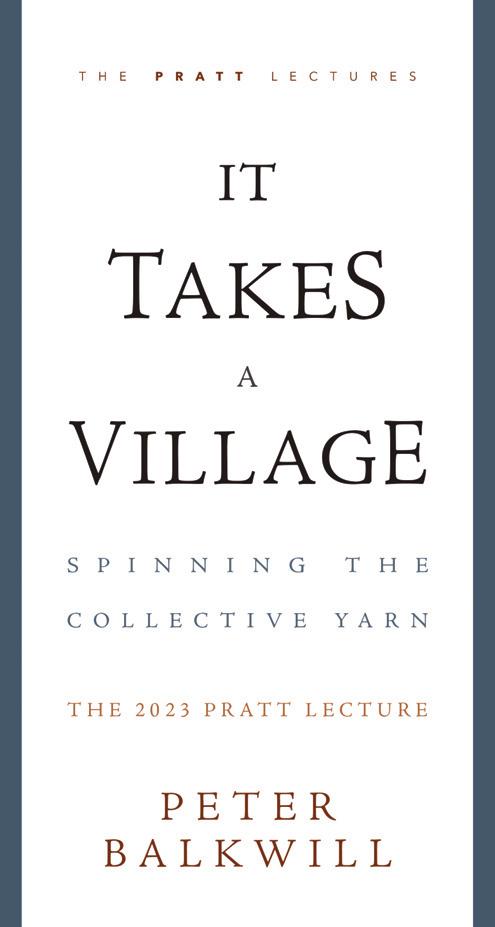
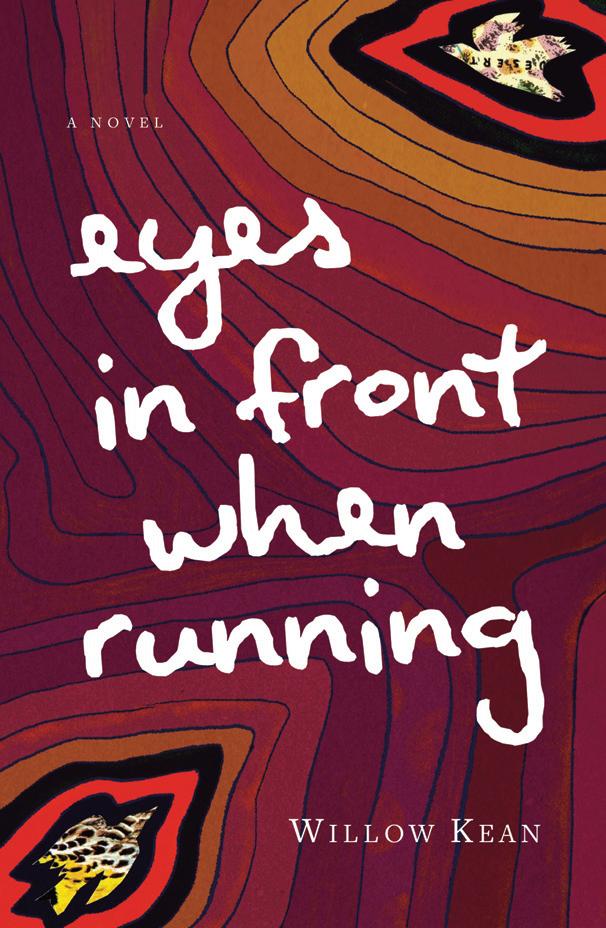
& we’re just getting going!

Breakwater Books was founded in 1973 to showcase the vibrant literary culture of Newfoundland and Labrador. Since then, our list has grown to include everyone from emerging writers to literary superstars, from local household names to a diverse range of national and international authors. And now that life begins at 50, we’re just getting going! Happy birthday to us!



